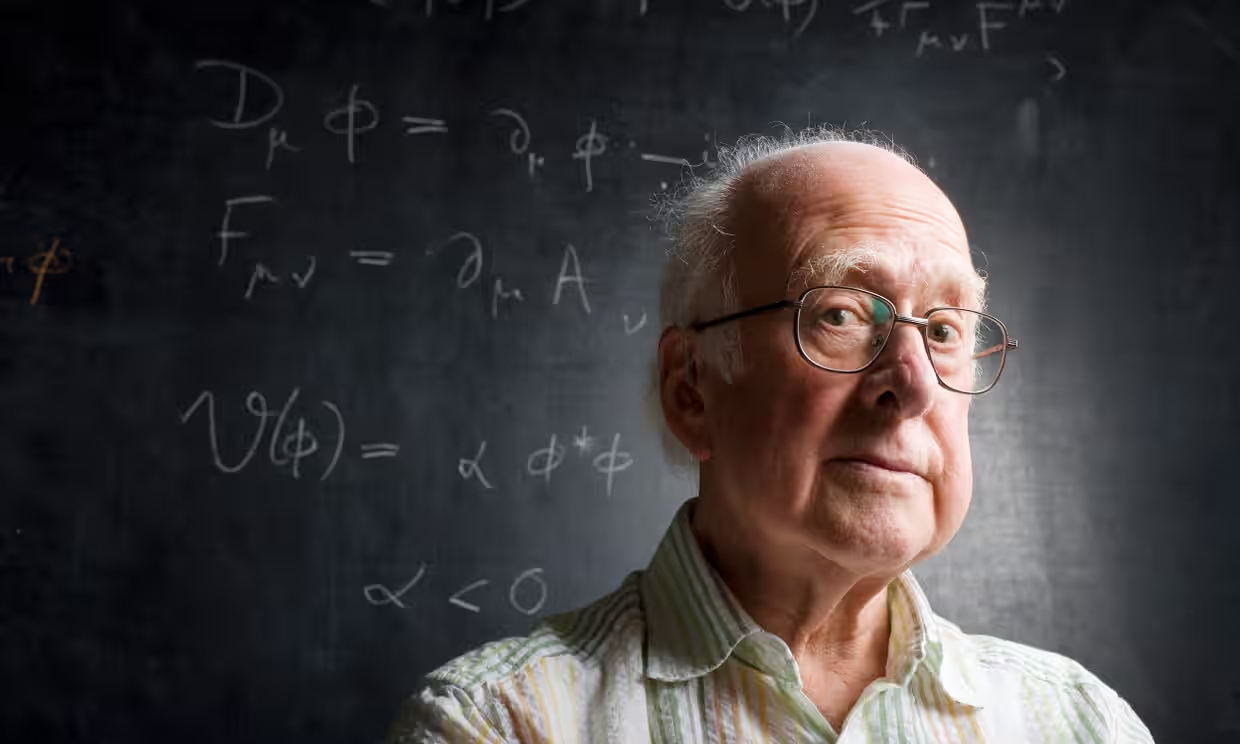Famous scientist Peter Higgs died in the UK on Monday at the age of 94. In 2013, he received the Nobel Prize for his work in the field of theoretical physics. His main achievement was the prediction of the existence of a particle, which explained where all objects in the universe got their mass.

Higgs the Physicist
On Monday, April 8, theoretical physicist Peter Higgs died at his home in Edinburg. He was 94 years old. He became known to the world at the beginning of the XXI century, when his colleagues began experiments at the Large Hadron Collider, one of the goals of which was to confirm the existence of a particle, the existence of which he predicted more than half a century before.
Peter Higgs was born in Great Britain in 1929. His teenage years fell during the Second World War, therefore, because of the German bombing, he often had to skip school. However, this did not kill his interest in physics and he entered King’s College in London.
There he received a brilliant education, defended his thesis and moved to Edinburgh, which he liked very much. There he got a job as a mathematics teacher at a local university, where he worked until 1996, after which he retired. And few people in the world would have heard of him unless of the work he wrote back in 1963, almost immediately after he became a teacher.
Where does the mass come from
From the very beginning of his acquaintance with physics, Higgs was interested in the question of where the particles that composed matter in our universe got their mass from. At that time, physics had already sunk in its constructions “below” the level of the atomic nucleus and its constituent protons and neutrons. Quantum field theory considered the universe at the level of fields and particles, the behavior of which is easier to understand at the level of long equations than daily experience.
This theory was beautiful and suggested the existence of complex symmetry at the very core of matter, but it had problems with mass. In particular, some particles responsible for fundamental interactions, such as the photon, did not have it, while others, for example, ensuring the collection of particles into the nucleus, had it.
This violated the very symmetry that the theorists liked so much. They began to look for ways in which this could happen so that the universe would not fall apart and quickly found it in the form of Goldstone’s theorem. It showed a dynamic universe that was very similar to ours, in which particles were born and formed a much more complex picture — supersymmetry.
The problem was that these particles belonging to the boson type still had no mass. However, Higgs found “holes” in Goldstone’s theorem and proposed an alternative mechanism that allowed newborn bosons, including those which had been proven to exist, to have mass. In fact, he did not do it himself, but simultaneously with two other teams of scientists, but he was given first place.
The scientist’s idea was that immediately after the Big Bang, the particles had no mass. However, after a moment, a special field began to act, which provided them with this property. At the same time, it had to have its own carrier particles. They became known as Higgs bosons.
“Particle of God” invented by an atheist
Higgs’ work immediately became quite famous among scientists, but his name did not mean anything to the general public for several decades. Because no one had seen the boson itself, and the theory described a solution to a problem that was very unobvious to most people.
Higgs continued to live his own life, which was actually quite intense. Many of his actions look quite ambiguous. He was a member of the campaign for nuclear disarmament, but left it when it opposed nuclear power plants. The same thing happened with his participation in Greenpeace when he started protesting against genetically modified organisms. And once Higgs canceled his lecture in Israel as a sign of disagreement with the policy of that state towards the Palestinians.
The most interesting thing happened with the nickname “God particle”, which was given to the Higgs boson. The scientist remained a staunch atheist all his life and fought against its use, because it seemed to hint that there was some kind of intelligent design at the beginning of the universe, which in fact was not even close to his theory.
Follow us on Twitter to get the most interesting space news in time
https://twitter.com/ust_magazine


